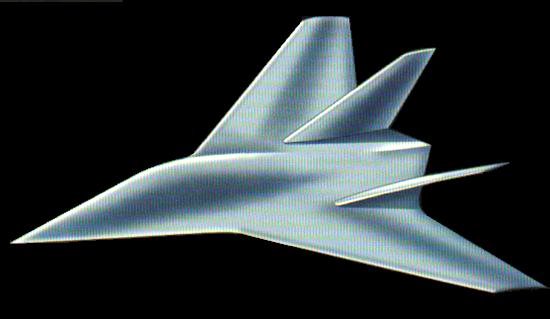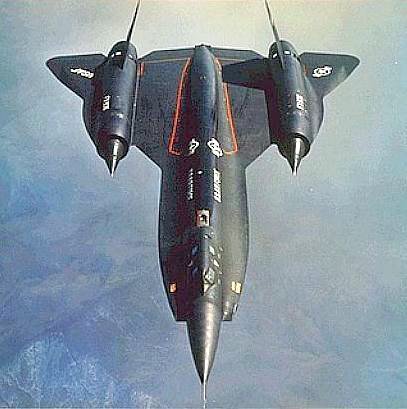- Get link
- X
- Other Apps
- Get link
- X
- Other Apps
The pinnacle in current fighter aircraft design the Lockheed F-22 Raptor has been described as an F-15 weapon system in a stealthy, supercruising platform. F-22 project officially began in 1981 when the US Air Force Aeronautical Systems Division, (ASD) put out a request for concepts for an Advanced Tactical Fighter (ATF) to replace the F-15 Eagle.
Keys to the desired replacement were the application of low-observables (stealth) technology, the ability to supercruise, maneuverability, and short takeoff and landing (STOL) capability.
Interestingly supersonic cruising “supercruise” was first proposed on the North American XB-70 Valkyrie Mach-3 bomber project of the early 1960s.
Lockheed’s Raptor concept almost certainly has its roots in their YF-12 program of the 1960s. This would be understandable as the SR-71 Blackbird (an A-12 / YF-12 derivative), survived reportedly over 4000 intercept attempts during its career.
YF-22 pre-prototypes were unable to meet the Air Force requirements for both short takeoff and landing and supercruise simultaneously. Once the Air Force dropped the STOL requirement, the aft portion of the aircraft was redesigned allowing significant reductions in drag and making super cruising possible.
[Above] The F-22s similarity to the Lockheed YF-12 - is hard to ignore. We think Lockheed simply resurrected their YF-12 concept for the F-22. The Raptors high-speed/high-altitude usage model is also similar in concept to the lofting flight profile of the Hughes AIM-54 missile - that is to gain a kinematic advantage. Thermal loads on the skin and airframe of a "super-cruising" F-22 are unknown. It is interesting to note that the large spine-mounted speed-brake of YF-22 was discarded on production F-22 in favor of a more unusual integrated speed-brake control scheme using existing control surfaces. This may again reveal its true nature as an aircraft more akin to YF-12, than the F-15?
This YF-12 shown with its internally stowed missile round.
Raptor features/Industry talking points:
• First look/first kill in all environments- A combination of improved sensor capability, improved situational awareness, and improved weapons provide first-kill opportunity against the threat.
• The F-22 possesses a sophisticated sensor suite that allows the pilot to track, identify, and shoot the threat before it detects the F-22. Significant effort is being placed on cockpit design and avionics fusion to improve the pilot's situational awareness. Advanced avionic technologies allow the F-22 sensors to gather, integrate, and display essential information in the most useful format to the pilot.
• Reduced observables- Advances in low-observable technologies provide significantly improve survivability and lethality against air-to-air and surface-to-air threats. The F-22's combination of reduced observability and supercruise accentuates the advantage of surprise in a tactical environment.
• Supersonic persistence- The F-22 engines produce more thrust than any current fighter engine, especially in the military (non-afterburner) power. This characteristic allows the F-22 to efficiently cruise at supersonic airspeeds without using afterburner (supercruise). This capability greatly expands the F-22's operating envelope in both speed and range over current fighters which must use afterburner to operate at supersonic speeds.
• Increased maneuverability- The F-22 has been extensively designed, tested, and refined aerodynamically during the Demonstration/Validation (DEM/VAL) process and coupled with high-maneuver capability. The sophisticated F-22 aero design and high thrust-to-weight provide the capability to outmaneuver all current and projected threat aircraft.
• Improved combat radius on internal fuel- To ensure the F-22 provides air superiority for deep interdiction aircraft, it operates at medium and high altitudes at ranges superior to current generation air-superiority aircraft.
• Improved reliability and maintainability- To ensure operational flexibility, the F-22 has better reliability and maintainability than any military fighter in history. Increased F-22 reliability and maintainability pay off in less manpower required to fix the aircraft and consequently less aircraft required to support a deployed squadron. Additionally, reduced maintenance support provides the benefit of reduced life cycle cost and the ability to operate more efficiently from prepared of dispersed operating locations. The F-22 exceeds current fighter sortie surge rates with a reduced support structure.
• Increased lethality and survivability- The above characteristics provide a synergistic effect that ensures F-22 lethality against an advanced air threat. The combination of reduced observability and supercruise drastically shrinks surface-to-air engagement envelopes and minimizes threat capabilities to engage and shoot the F-22.
• Air-to-surface capability- The F-22 has a secondary role to attack surface targets. The aircraft will be capable of carrying 2 x 1,000 pound Joint Direct Attack Munitions (JDAMs) internally and will use on-board avionics for navigation and weapons delivery support.
Your thoughts?
[Be advised that Google has deleted this original writing dated 2009 - scholarship purposes require the original publish date to be retained. Use comment(s) time(s)tamp(s)]
- All media found here is for scholarship and research purposes and protected under U.S. Internet ‘Fair Use’ Law -
Comments







Hello Boresight,
ReplyDeleteI have seen something astonishing with the Raptor
https://www.youtube.com/watch?v=Nc04qQTY6bs
Starting at around 0:33
This is what we call instant turn rate, correct?
If this is the case, anyone watching this saw the Raptor completely change its velocity and momentum in a 180 turn as if it had no inertia.
Does the Flanker have an ITR to match?
If it does please post a link to a video and an article. I have seen no Flanker demonstrate as tight a turn as this Raptor. In a dogfight this can easilty be a killer turn if the Flanker in fact does not have that ITR.
I thought it was worth posting.
-Cameron
Hi Cameron
ReplyDeleteYes, the F-22A can make a very tight snap-turns. See Thoughts and Discussion:
“F-22 proponents will sight that she has a superior turn rate (degrees/second) to anything else flying. However the human body DOES have a sustaining g limit of ~ 12-g. Remember, g- loads are universal functions of Newton's laws of motion. F-22 proponents will say that Raptor pilots can use short-duration higher g-jerks (snap-turn) to fly ‘an aerial box’. In all likelihood, Raptor MUST simply slow down to address Newton. Together with helmet-sighting, excellent energy recovery and pilots of equal skill, there is simply no time to fly 'aerial boxes' - advantage Flanker.”
The Raptor is going to need that turn rate to avoid all the opponents’ helmet-sighted missile shots. To make matter worse F-22A has no helmet-sighting so can only fire the AIM-9M not the AIM-9X. The Raptor is unbeatable if this was the 1970s.
It was allways the wet dream of the AirForce to see a blip at a screen and by pushing a button that blip disappears.This will forever be a dream as long as there is no reliable system that divides friend from foe in a real flying enviroment with 20 AC´s in the air. That diminishes BVR to nothing, because you have to visually identify the enemy, which takes the distance out of the now ensuing dog fight.And a 27ton AC(F-22) will forever been beaten by a 12ton AC(F-16) in subsonic flight/when it matters.
ReplyDeleteThis comment has been removed by the author.
DeleteWell this is true. Indeed we acknowledge this in our ‘The Future of Air Combat’: “Aircrews must train to both exploit a technical superiority and train so not to rely on it. The rest of the world may not cooperate to allow you to employ "a technical advantage" including ones own government, due to Rules of Engagement or Air Tasking Order.” The Americans will attempt to have AWACS determine IFF of contacts and vector friendly fighters. In 1991 F-15s were flying all over Iraq attempting to run-down AWACS contacts to get within AIM-7 range – even head on (and then after the engagement nearly flaming-out and screaming on their radios for tankers (any tanker) to run into enemy airspace to assist the fuel stricken F-15s. This is why Flankers are so dangerous – they can carry a lot of gas.
ReplyDeleteBut after the Iranian experience with the F-14/AWG-9/AIM-54 during the Iran-Iraq war (as no one has yet to disprove the research by Cooper and Bishop) we think some‘re-think’ is in order. Read our ‘Future of Air Combat’ and the F-15 firsthand pilot accounts - it really does address the whole picture very well. - Boresight